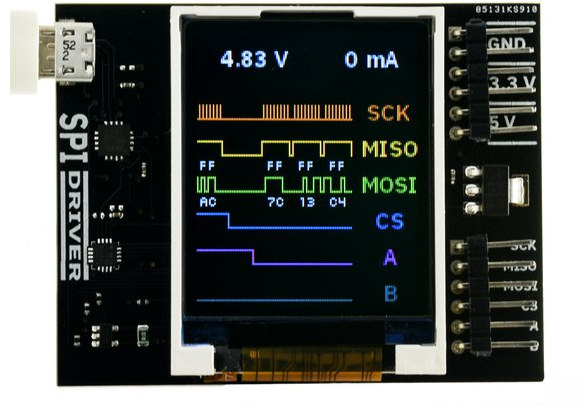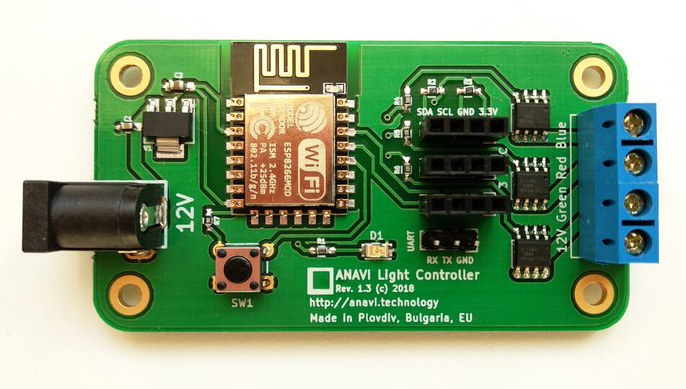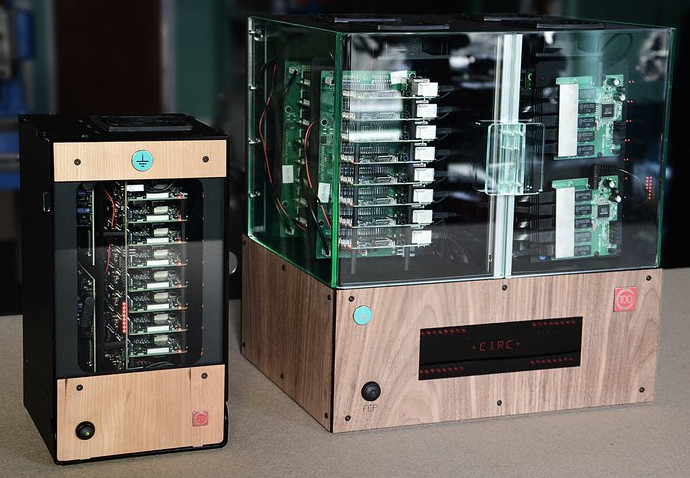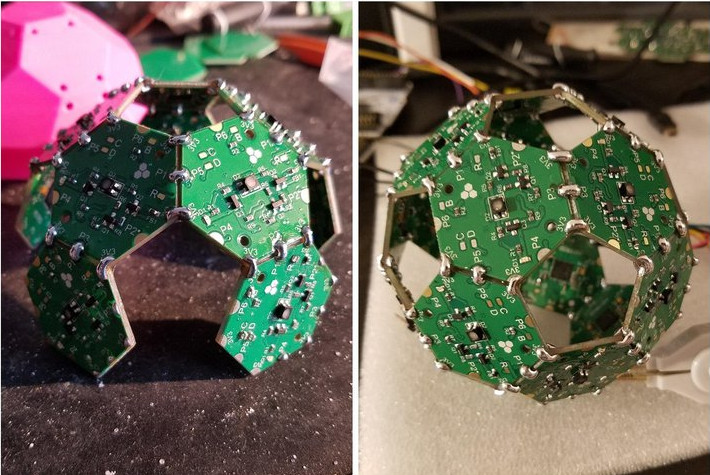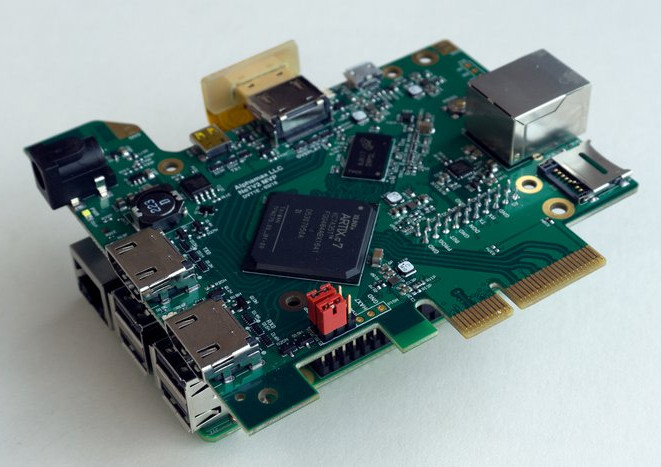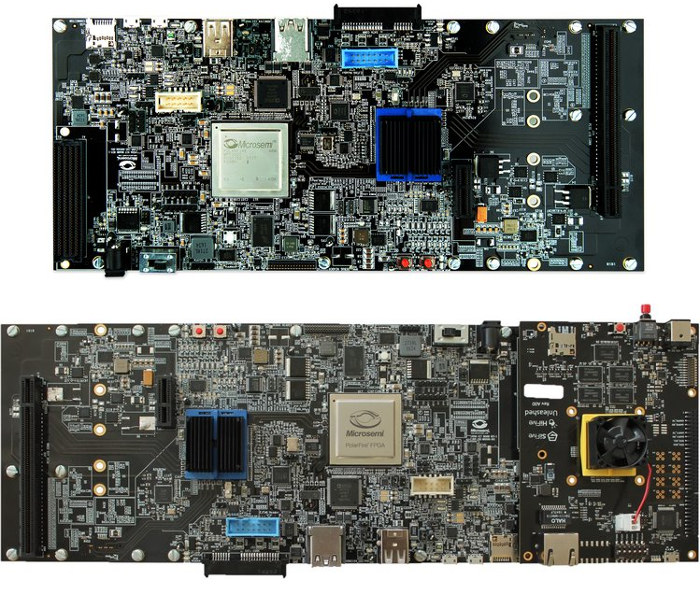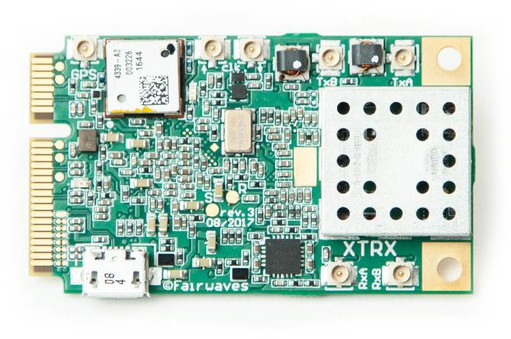SPIDriver is an interested SPI debugging / programming tool that connect to your PC’s USB port to control SPI devices, such as LCD Displays or LED strips, while showing the SPI signals and voltage/current levels on a color display. The tool can also be used as an SPI flash programmer. SPIDriver hardware specifications: Headers 5-pin SPI header up to 500 Kbps + A/B auxiliary output signal 4-pin power header with 5V and 3.3V support Maximum power out current – up to 470 mA Signal current – up to 10 mA Device current – up to 25 mA Host interface – micro USB 2.0 port Color display showing signals Dimensions – 61 mm x 49 mm x 6 mm The board works with an open source program available in Windows, Linux, and Mac OS using either a GUI or a command line. It’s also possible to program the device using C/C++ […]
ESP8266 based ANAVI Light Controller can be Programmed with Home Assistant or the Arduino IDE (Crowdfunding)
ANAVI Technology previously launched a Light pHAT allowing for RGB Light strip connection to Raspberry Pi boards, and during my review of ANAVI Light pHAT with Raspberry Pi 2, it did the job, but if that’s all you want to do, the Raspberry Pi board is clearly oversized & overpowered for the job. So Leon ANAVI got back to the drawing board and designed a similar open source hardware board – called ANAVI Light Controller – with an built-in ESP8266 module that removes the need for a fully fledged Linux board. ANAVI Light Controller specifications: Wireless Module – ESP8266MOD module based on ESP8266 Tensilica L106 32-bit processor Connectivity – WiFi 802.11 b/g/n Expansion Terminal block for 12 V RGB LED strip 3x I2C headers for sensors Debugging – UART header Misc – Button Power Supply – 12 V via power barrel jack Dimensions – 75 mm x 40 mm Certification […]
Circumference Datacentre-in-a-Box Features up to 32 Raspberry Pi 3 B+ Managed by a UDOO x86 Ultra Board (Crowdfunding)
We’ve previously seen several clusters made of Raspberry Pi boards with a 16 RPi Zero cluster prototype, or BitScope Blade with 40 Raspberry Pi boards. The latter now even offers solutions for up to 1,000 nodes in a 42U rack. Circumference offers an other option with either 8 or 32 Raspberry Pi 3 (B+) boards managed by UDOO x86 board acting as a dedicated front-end processor (FEP) that’s designed as a “Datacenter-in-a-Box”. Key features and specifications: Compute nodes – 8x or 32x Raspberry Pi 3 B+ boards for a total of 128x 64-bit 1.4 GHz cores max Backplane MCU – Microchip ATmega1280 8-bit AVR microcontroller Serial Comms – FTDI FT4232 quad-USB UART Switched Mode Power Supply Units (SMPSUs): 8x / 32x software controlled (one per compute node) 1x / 4x always-on (microcontroller) HW monitoring: 8x / 32x compute node energy 2x / 8x supply voltage 2x / 8x temperature Remote […]
ZiP (zGlue Integration Platform) Enables the Design & Manufacturing of Low Cost Custom Chips
When I first started to read about zOrigin on Crowdsupply, I was not really impressed. Meh… Yet another Bluetooth LE fitness tracker with a few sensors, and an Android app. But as I read further, I found out the interesting part was inside the device: ZGLZ1BA, a custom chip manufactured using ZiP (zGlue Integration Platform) chip-stacking technology, which produces something similar to SiP (System-in-Package) but at a much lower cost and manufacturing lead time. But let’s have a look at zOrigin tracker first, which acts as a demonstration / evaluation platform for ZiP technology. Key specifications & features: “SoC” – ZGZL1BA ZiP with Dialog Semiconductor DA14585 16MHz 32-bit ARM Cortex M0 MCU with BLE Analog Devices AD8233 Heart Rate Analog Front End (AFE) Macronix MX25R4035F 2 Mbit Flash Memory MCube MC3672 Accelerometer Maxim MAX77734 Power Managment IC (PMIC) SiTime SIT1552 32 kHz Oscillator Vishay SI8466EDB MOSFET 30 passive components Package […]
Hexabitz Modular Prototyping Platform Enables Wire-Free 3D Electronics Designs (Crowdfunding)
A few years ago, I made a Raspberry Pi case made of perfboard and created some sort of DIY modular 3D electronics design by using the top and sides of the case to also hold electronics components and associated circuitry like a relay, and LEDs. The just launched Hexabitz hexagonal / pentagonal modules are designed to make prototyping easier, and also provide flexibility to create all sort of wire-free (3D) electronics designs with minimal soldering. A little over a dozen of modules are currently on offer, most with an STM32F0 Arm Cortex M0 micro-controller: Modules with built-in MCU 01R00, P01R00 – RGB LED (hexagon / pentagon) with Cree Tri-color (RGB) SMD LED, 4-Pin PLCC H02R10 – Bluetooth/BLE V4 based on Laird BT900-SA + chip antenna, +8 dBm max H04R00 – Audio amplifier, speaker, and headphone jack based on ST TS4990IST 1.2W audio power amplifier, 0.7W, 8 Ohm speaker H05R00 – SPI […]
NeTV2 Open Video Development Board Works with Encrypted and Unencrypted Video Streams (Crowdfunding)
Chumby NeTV was an open source hardware Linux IPTV media player based on a Xilinx Spartan FPGA and a Marvell Armada 166 processor, and unveiled in 2011. Many years have passed since then, and now Bunnie Huang has come up with a new version. The NeTV2 development board is also optimized for open digital video application, but based on a more powerful Xilinx Artik-7 FPGA, and a Raspberry Pi 3 B+ can be added for things like seamless JTAG configuration and overlay video generation. Key features and specifications: FPGA – Xilinx Artik-7 XC7A35T-2FGG484 (available with XC7A50T option during campaign only) System Memory – 512 MB RAM, 32-bit wide DDR3-800 Storage – micro SD card, 8 MB SPI flash Video Ports 2x HDMI type A inputs 1 x HDMI type A output 1 x HDMI type D output. One input/output pair configured for in-line ‘NeTV mode’ video filtering. Max Video Bandwidth […]
HiFive Unleashed RISC-V Linux Development Board Gets a $2000 FPGA Expansion Board
If you’re a RISC-V architecture’s enthusiast or represent a company working on products with the new ISA, you may have spent $999 or more on Hifive Unleashed RISC-V Linux development board a few months ago. You now have the opportunity to spend an extra $1,999 for HiFive Unleashed Expansion Board powered by a MicroSemi PolarFire FPGA programmed with a PCIe root port bridge, and allowing you to test all sorts of peripherals such as HDD’s & SSD’s, HDMI output, and audio cards, network adapters, graphics cards, and so on. Expansion board specifications: FPGA – Microsemi Low Power PolarFire FPGA with 300K Logic Element 4 Gbit DDR4 x16 SPI Flash for remote FPGA updates, QSPI Flash connected to GPIO 24 lane PCIe Switch x1 PCI Express card connector x16 PCI Express card connector with 4 lanes of PCIe gen2 connected SSD M.2 connector SATA connector HDMI connector eMMC Nand Flash uSD […]
XTRX SDR Mini PCIe Card Supports 10 MHz to 3.8 GHz Tuning Range, up to 120 MSPS Sample Rate
Fairwaves is a startup that aims to make deploying and operating mobile networks in rural regions profitable, and their latest project is called XTRX, a high performance Software Defined Radio (SDR) board packed into a mini PCIe card form factor. The project was launched on Crowdsupply earlier with year, got fully funded by around 700 backers, and the company is now working on fulfilling backers rewards by the end of August. XTRX board specifications: RF Chipset – Lime Microsystems LMS7002M FPRF (as found in LimeSDR Mini) FPGA Chipset – Xilinx Artix 7 35T RF Channels – 2 × 2 MIMO Sample Rate – ~0.2 MSPS to 120 MSPS SISO / 90 MSPS MIMO Tuning Range: 30 MHz – 3.8 GHz Rx/Tx Range: 10 MHz – 3.7 GHz 100 kHz – 3.8 GHz with signal level degradation PCIe Bandwidth PCIe x2 Gen 2.0 up to 8 Gbit/s PCIe x1 Gen 2.0 […]


